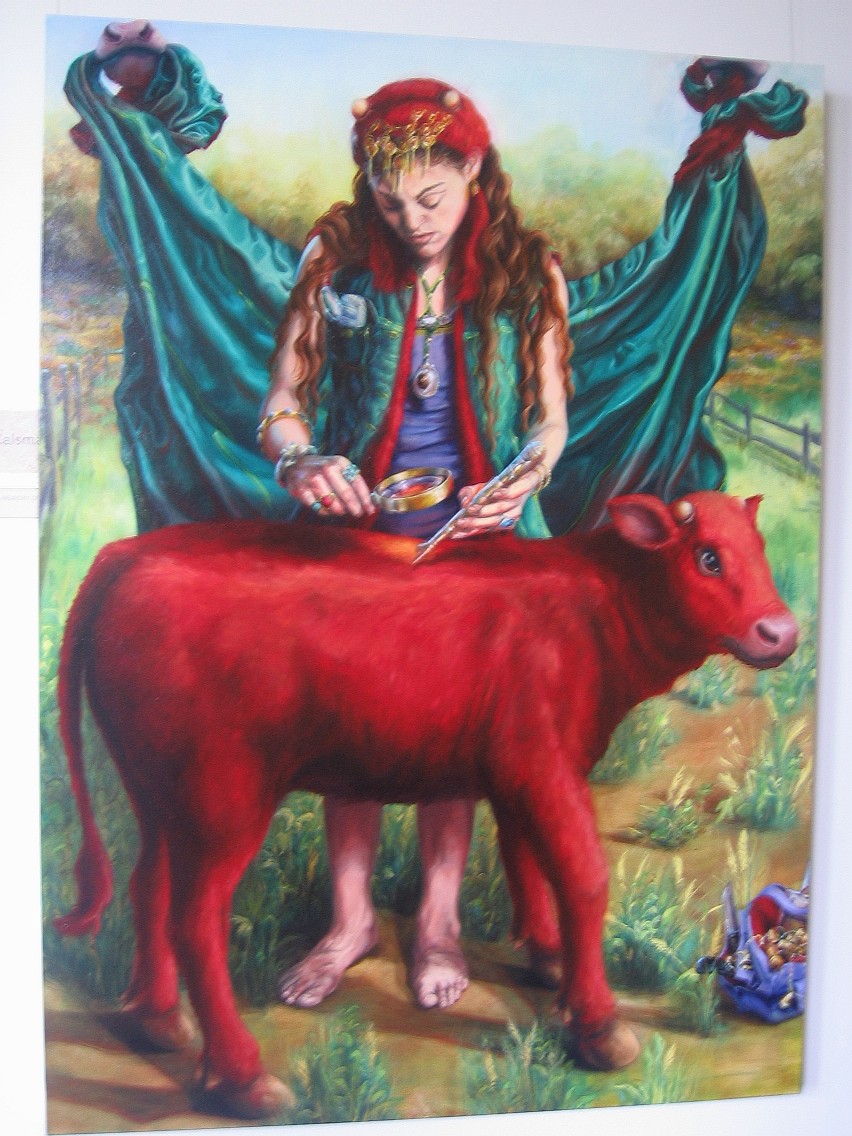Part I: The Ride to Shchem
We arrived at a natural spring on the slopes of Mount Grizzim, in the Gai Yosef (the Valley of Joseph.) This spring is one of the few in Israel which is considered "Mayim Chayyim," living waters, i.e. a spring which flows continuously.

Mayim Chayim have special properties in Halachah (Jewish practice.) Most Mikvahs (purification baths) have two chambers, one below which holds some form of natural water (spring water, rain water, well water, etc.,) and one above which contains chlorinated or tap water. The section of natural water below maintains its purity and transmits this purity to the upper waters. However, the lower section must hold a minimum volume of natural water to be able to maintain its purity.
Mayim Chayim has no such minimum volume requirement and may be used in any volume sufficient for complete immersion.
 This basin would actually be considered a kosher mikvah, if a person were able to fit into it. Well, maybe it's a dog mikvah.
This basin would actually be considered a kosher mikvah, if a person were able to fit into it. Well, maybe it's a dog mikvah.The locals have built a small mikvah out of cinderblock and corrugated aluminum. Some of the guys jump in for a pre-shabbat dip.
 There is one other use for Mayim Chayim: The preparation of the ashes of the Parah Adumah; the Red Heifer (cow.) In the Torah portion of Chukat, which we read a few weeks ago, God delivers the commandment to prepare the ashes of a Parah Adumah, which must not have more than one non-red hair on its entire body to be considered kosher. It must never have borne a yoke and must be blemish-free.
There is one other use for Mayim Chayim: The preparation of the ashes of the Parah Adumah; the Red Heifer (cow.) In the Torah portion of Chukat, which we read a few weeks ago, God delivers the commandment to prepare the ashes of a Parah Adumah, which must not have more than one non-red hair on its entire body to be considered kosher. It must never have borne a yoke and must be blemish-free.The Parah Adumah is then sacrificed, and its ashes mixed with Mayim Chayim. This Parah Adumah water is then sprinkled over those who wish to ascend to the Temple Mount, both during its construction and later to bring sacrifices once the Holy Temple is functioning.
Only two kosher red heifers have been recorded throughout Jewish history. Because we do not have a red heifer, we can not ascend the Temple Mount to remove the structure that is there now and rebuild our destroyed Temple. Of course, based on the stance of the current government, we'd probably have to have new elections too. And a few other things will have to happen first in addition to this. Still, for this reason, the birth of a Parah Adumah will be seen as one of the signs of the coming redemption.
One strange facet of the law of the Parah Adumah: while those who receive the mayim chayim and parah adumah ash mixture are purified, those involved in the preparation are rendered impure. This law is considered to be the most impenetrable law of the Torah, and is given as the paradigm of chukim, the types of commandments which we accept on faith, without complete understanding of their deeper implications.
Not only is Mayim Chayim used for purification and for the making of the parah adumah water, I seem to have discovered a third use on my own:




No comments:
Post a Comment